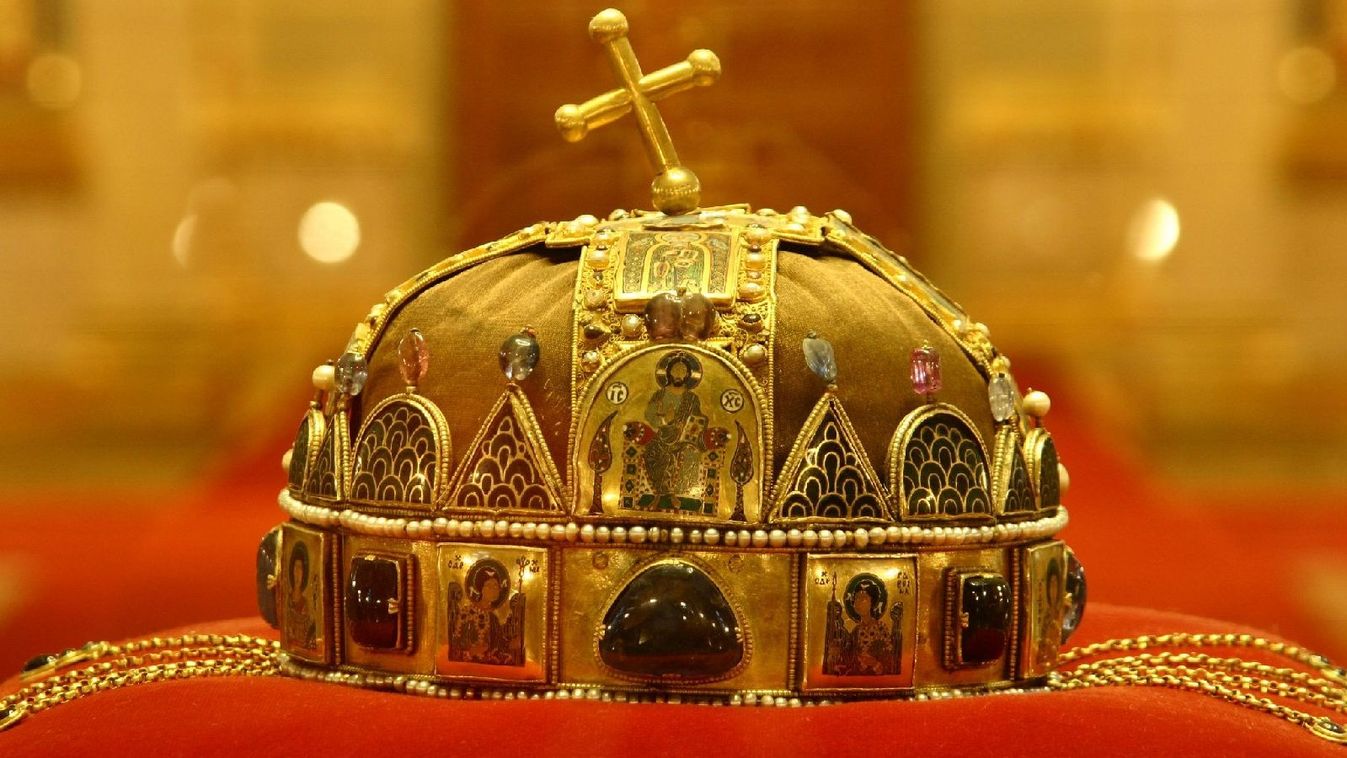Legend of the Holy Crown (Budapest, Parliament)
Fact of the Hungarian figure „St. Stephen and others – First christian saints in Hungarian Kingdom”
Part of the „The patrons and guardians of the land” topic
The Holy Crown of Hungary is unique among European crowns, as it is not merely a symbol of royal authority but the very source of legitimacy for the Hungarian kings. According to legend, this sacred relic was sent to St. Stephen by Pope Sylvester II around 1000 AD, following an angelic vision. This act was meant to solidify Stephen’s role as the apostolic king of Hungary, underscoring the divine approval of his reign and establishing a profound connection between the Hungarian monarchy and the Catholic Church.
The legend, as recounted by Bishop Hartvik, aimed to emphasize the „apostolic legation” of St. Stephen during a time of church-political debates, highlighting the crown’s religious significance. However, historical evidence suggests that the crown itself, known today as the Holy Crown, is a composite of two parts. The lower diadem, or Greek crown, was a gift from Byzantine Emperor Michael VII Doukas in the 1070s, while the upper, cross-shaped band, or Latin crown, was likely a queen’s crown, perhaps given to the wife of King Géza I. These two parts were combined during the reign of Béla III in the late 12th century.
As the Holy Crown became more closely associated with St. Stephen, it grew in symbolic importance, ultimately representing the Kingdom of Hungary itself by the end of the Middle Ages. The crown was not merely a royal accessory but a sacred object, believed to possess mystical powers, and essential for the coronation of legitimate Hungarian rulers. Over the centuries, the crown was taken abroad several times due to wars and political upheavals but was always returned to Hungary.
One notable incident occurred in the 17th or 18th century when the cross atop the crown became crooked during transportation, a feature that remains today. During World War II, the crown was taken to the United States for safekeeping and was only returned to Hungary in 1978. Since then, it has been housed in the Hungarian Parliament in Budapest, where it continues to serve as a powerful symbol of Hungary’s Christian heritage and the enduring legacy of St. Stephen.
The Holy Crown’s deep connection to St. Stephen, who was canonized as Hungary’s first saint, reinforces its significance not only as a national treasure but also as a relic that embodies the sanctity of the Hungarian monarchy. The crown’s presence in the Parliament underscores the intertwined nature of church and state in Hungary, reflecting the sacred history that has shaped the nation since its founding.





